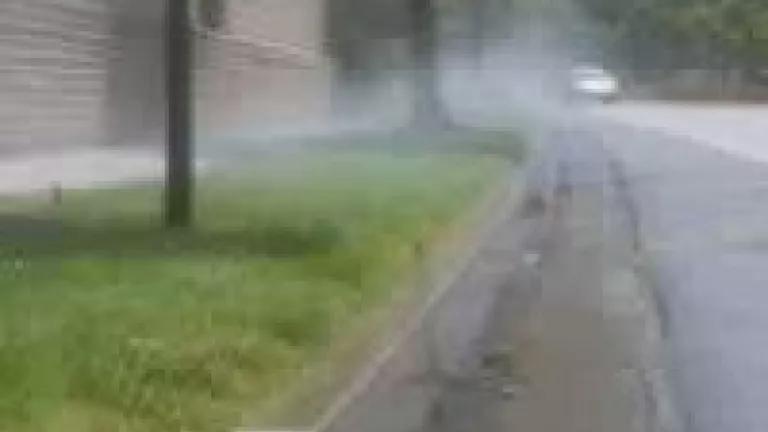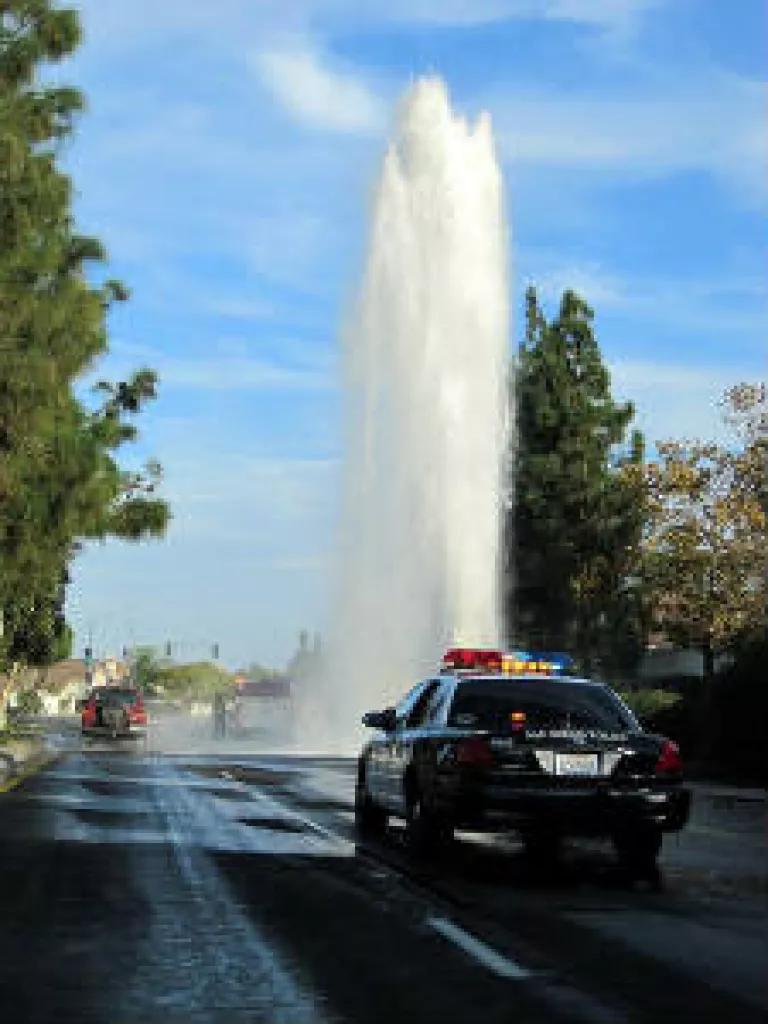
As California enters the hottest and driest season of the year, State officials are acting today to prod California’s cities and water suppliers to take drought conditions more seriously – and none too soon. Emergency regulations drafted by the State Water Resources Control Board are clearly needed, after a recent survey found that scores of water suppliers had not invoked any provisions of their local drought contingency plans, even as California experienced its driest year on record since becoming a state over 150 years ago.
What the State is Doing Now
State regulators are taking three key steps to help conserve available water supplies in urban areas. First, the Board is proposing a statewide ban on four specific types of wasteful outdoor water use -- uses that many communities already ban even when there is no drought. The prohibited practices are: watering down driveways and sidewalks, hose-washing a car without a shutoff nozzle, operating fountains without recirculation, and flooding sidewalks and gutters with irrigation runoff. The board’s action authorizes a fine of up to $500 per day for any of these infractions, and empowers any law enforcement officer to cite the responsible parties.
Overspray to be banned. Photo:Gardensoft
Secondly, the Board is requiring each water supplier to report its total volume of water production each month by the 15th of the following month. (Water “production” means the water made available for customer use, which includes both water sold to customers and water that leaks from the utility’s distribution system before it reaches a customer.) Monthly water production numbers will allow the Board to track total water use on a close-to-real-time basis, which is essential for the Board to assess what additional actions may be needed to maintain essential water supplies as the drought continues. Monthly numbers can also reveal the share of total demand that is being used outdoors, which will help the Board shape policies to further limit discretionary outdoor use if necessary.
Third, the Board is telling all local water suppliers that if they have an approved drought plan, they need to activate their local plan at the stage of the plan that begins to place mandatory limits on outdoor water use. (Most drought plans are organized in “stages” that correspond to the severity of the shortage, with voluntary measures in the early stages and increasingly stringent water use limits in the later stages. Initial stage limitations in drought plans typically allow for ample irrigation and serve mainly to curb the excessive irrigation that is unfortunately commonplace.) Any water supplier that doesn’t have an adopted drought plan is being required by the Board to set a limit on lawn watering of no more than two days per week. And as an alternative to such outdoor limits, water suppliers with budget-based rates taylored to specific customers' water use can sidestep the requirement to limit irrigation if they can show the Board that their actions save as much or more water.
Our Take
The Board must act to ensure the continued availability of water in amounts needed to maintain public health and fire-fighting capability in towns and cities across California. Until now, drought mitigation efforts have largely been based on the expansion of existing conservation incentive programs and low-interest loans for water recycling. But in the face of continuing dry conditions and limited local response in some areas, regulatory measures are needed now. These common sense steps to curtail water waste and collect up-to-date information to help better manage the drought are both timely and prudent.
In fact, the Board could have gone further. We’ve recommended that the language of the draft regulation be extended to require submission of monthly production numbers for the years 2011, 2012, and 2013, as well as the initial months of 2014, to provide the Board and the public with the same 3-year baseline for all water suppliers, including those who refused the Board’s earlier voluntary request for past and current water production numbers. And we also suggested that all ornamental fountains cease operation, since any fountain or spray has the effect of increasing evaporative losses regardless of whether the fountain recirculates water. We also believe that the Board should require each urban water supplier to immediately prepare and submit a report that quantifies the revenue shortfalls due to reduced water sales that are anticipated over the next 12 months and identifies measures to be taken to maintain the solvency and operational capability of the utility and the affordability of essential levels of water service for low income customers.
And what’s been behind the local inertia on drought action in some areas? Complacency, hope for rain, distraction by the World Cup or LeBron’s new Decision? Who knows? But one factor in the background may be that some local water managers simply want to continue selling as much water as they can for as long as they can. As I noted back in February, most water suppliers in California are facing this drought financially flat-footed. Although state law requires water utilities to prepare and adopt a drought contingency plan, and although the law requires the plan to include “an analysis of expected revenue effects of reduced sales during [drought] shortages and proposed measures to overcome those effects,” few water suppliers have adopted drought contingency rates as part of their voter-approved water rate structure. Since rate adjustments always take time in California, this is like waiting for a fire to break out before going to the store to buy a fire extinguisher.
Drought contingency rates have two-fold benefits. They reinforce the conservation message during the drought by raising the unit cost of water consumption. They also allow swift action to maintain the financial solvency of water suppliers when customers cut back their water use and water sales plummet. Some agencies address this issue by maintaining a reserve fund that can be drawn upon as sales drop – providing some level of financial protection, but forgoing the conservation messaging that is delivered by drought rates. Others, including Los Angeles, have drought rates as part of their approved rate structure, and can adjust rates quickly as drought conditions warrant.
What More Can be Done
In response to the Governor Brown’s drought proclamation in January, all Californian’s have a role to play in saving water at home and at work – homeowners, renters, students, teachers, proprietors, manufacturers, laborers, entrepreneurs. Whether you’re new to the state and new to the issue, or well-versed in sustainable practices, we can each find ways to help save water today that we may need even more in the months ahead. For starters, check here for our Nine Ways to Save Water Home.
As for the bigger picture, we noted last month in a report that NRDC jointly developed with the Pacific Institute and Dr. Robert Wilkinson of UC Santa Barbara, urban water use in California can be cut by one-third to one-half using technologies and practices that are available today. Today’s drought may come to typify conditions that persist as the climate changes. To mitigate the impacts of the current drought, and to better protect the state and its economy for dryer conditions ahead, California needs to make more efficient use of existing water supplies by –
- adopting more sensible pricing structures for water and wastewater service that better reward customers that conserve;
- accelerating the installation of water meters in communities with remaining unmetered customers;
- completing the replacement of pre-1994 plumbing fixtures that are still in use wasting water;
- accelerating the replacement old style top-loading clothes washers with efficient new machines that use 1/3 as much water;
- replacing unneeded and unused turf grass with functional and attractive landscapes that can be sustained without relying on public drinking water;
- curtailing the avoidable water leakage from utility pipes and customer premises;

Water main break -- San Diego 2009
Photo: Flickr: Jun
Water efficiency alone may not be a singular guarantee of future water security. In The Untapped Potential of California’s Water Supply, we highlight the role that additional water recycling and effective capture of urban stormwater can play in augmenting local water supplies. But full adoption of water efficiency measures will make any other necessary steps more manageable and less costly. And as the current drought lengthens its hold on the state, water efficiency is a “no regrets” strategy that should be redoubled in the months ahead.

